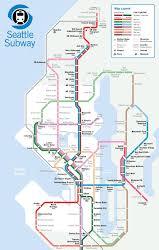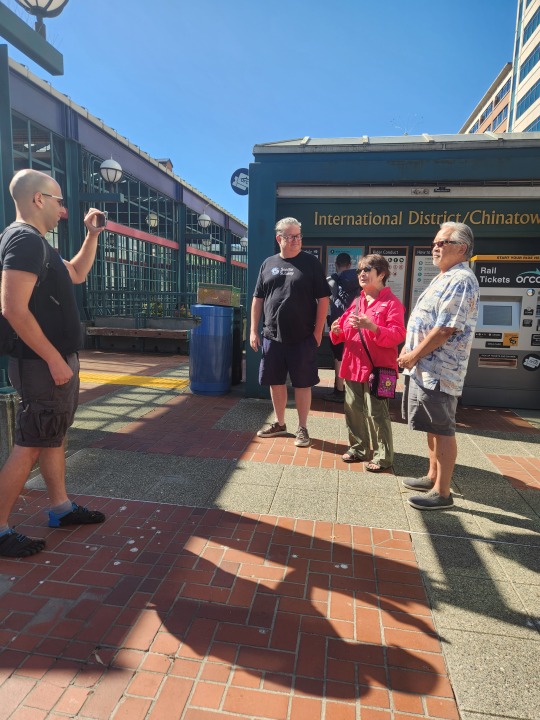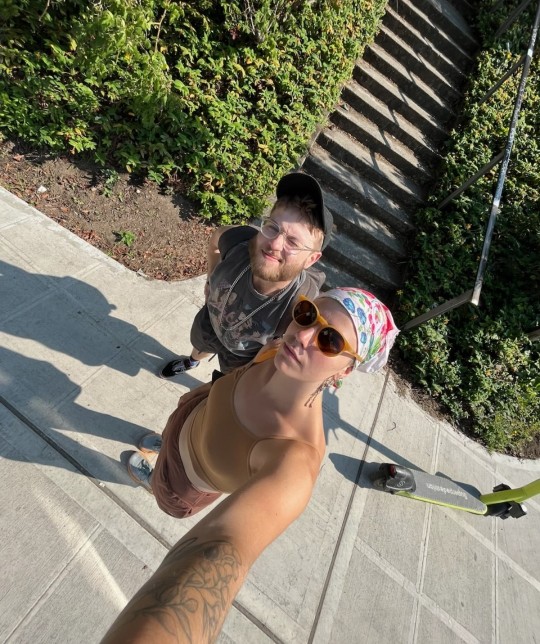Don't wanna be here? Send us removal request.
Text
Developing an Environmental Impact Study on the Ballard to UW Light Rail Corridor
Tumblr Post
Hey all! It’s Palmer here, hoping everything is going well with your summer internships! I have been given the opportunity to work with Seattle Subway Foundation’s 501c3 branch! Seattle Subway is a non-profit, volunteer-based organization working to expand access to the Light Rail in the greater Seattle area. Their primary goals involve public outreach and grassroots advocacy to spread awareness of the benefits of public transportation projects. Currently they are working to hold local leaders and transit organizations accountable to the goals and timelines approved by voters in the ST3 extension plan. My internship is mainly focused on developing a Draft Environmental Impact Study based on the proposed extensions for ST4, which are delineated on the Seattle Subway Vision Map (pictured below) and have not been approved yet by voters. My research is focused on the Ballard to Sand Point Line Extension, which would connect U-District with the already approved Ballard Link Extension which is projected to be completed in 2035. I have been lucky enough to collaborate on this portion of the project with Mae Langford (also pictured below) who has been incredibly helpful in this process. Together, we have organized site visits to the Ballard/Fremont region to visualize possible Link station locations along SR99 and 46 Avenue and researched many of the residential and commercial impacts that a project of this scale may illicit. The other aspect of the internship has involved public outreach and social media. For this portion of the project, I have been attending various farmers markets and events in Capitol Hill, Chinatown/International District, and Ballard, where I have worked to spread awareness of current events involving transit projects, rallied support for Seattle Subway Foundation on social media, and garnered community awareness of Seattle Subways mission to expand grade separated transit systems attractive enough to compete with private automobiles.
One of the most interesting things I have come to realize during my time with Seattle Subway Foundation and my associated research is just how much of the public realm is dedicated to private vehicles, and how that infrastructure has affected the quality of life for pedestrians and urban dwellers. Most of the city’s land mass is developed for the automobile, which has created expensive and undesirable consequences for residents and municipalities. Some notable impacts include urban heat island effects, ambient air and noise pollution, stormwater contamination and expensive diversion systems, unsafe conditions and limited autonomy for children and young persons, economic losses resulting from traffic congestion, reduced access for the elderly and disabled, and reduced opportunities for socialization and community interactions. Cities with car-centric transportation infrastructure are less permeable and sprawl outwards from the urban center, gobbling up arable farmlands and wildlife habitat, at the heavy expense of taxpayers.
The greatest challenge so far has been in coordinating the actual Draft Environmental Impact Statement. These documents are often many hundreds of pages long and incorporate the help of electrical engineers, environmental scientists, political scientists, policy experts, transit authorities, and many others. Mae and I have a good deal of knowledge regarding environmental impacts and the tenants of sustainability, but we are not engineers, nor are we environmental lawyers, so this process has involved quite a bit of background research and collaboration with our site supervisors Keith Kyle and Arthur Backus, who have helped us visualize the finished product and narrow our research topics. They have provided valuable academic and media sources to illuminate some of the more confusing or complex aspects of drafting an impact study, and how current events have affected timelines and locations of future Light Rail stations. By collaborating with my site supervisors, meeting with my faculty advisor, and scheduling interviews with transit experts, I have no doubts that Mae and I will be successful in developing a Draft EIS on the Ballard to Sand Point Link Extension that will be useful to Seattle Subway in their mission to educate the public and influence decision makers.
For my questions, I would love to know how public transportation has or has not benefited you personally, and how often you utilize the Link Light Rail during your day to day activities? Or, how do you think Sound Transit and Seattle should manage some of the negative impacts of transit expansion like gentrification, construction delays, and/or displacement?





1 note
·
View note